19 Ways to Protect Your Garden From Extreme Heat
Do you worry about what a sudden summer heatwave could do to your garden? In this post, I share how to protect your garden from extreme heat and lower the stress on your favorite flowers.
I never thought I would write about protecting the garden from extreme heat on my blog.
That’s because our average June temperature in the Seattle area is 66 degrees F., with six days of rain. So, I rarely think about what implications the hot temperatures (reaching over 95°F.) could have in the garden, especially in the early summer.
We were not prepared for the record-breaking heatwave (three days over 100°F.) in the Pacific Northwest a few years ago, and neither were the plants in the garden (I’m in garden zone 8B). I was mainly concerned about the sweet peas, snap peas, and hydrangeas.
Mother Nature has had her hands full, and delivering extreme temperatures is becoming a common problem for gardeners in all parts of the country and worldwide as temperatures rise. The year 2023 was the hottest on record. So, don’t you think this is the best time to learn some tips and best practices for protecting your garden during these hot summer months?
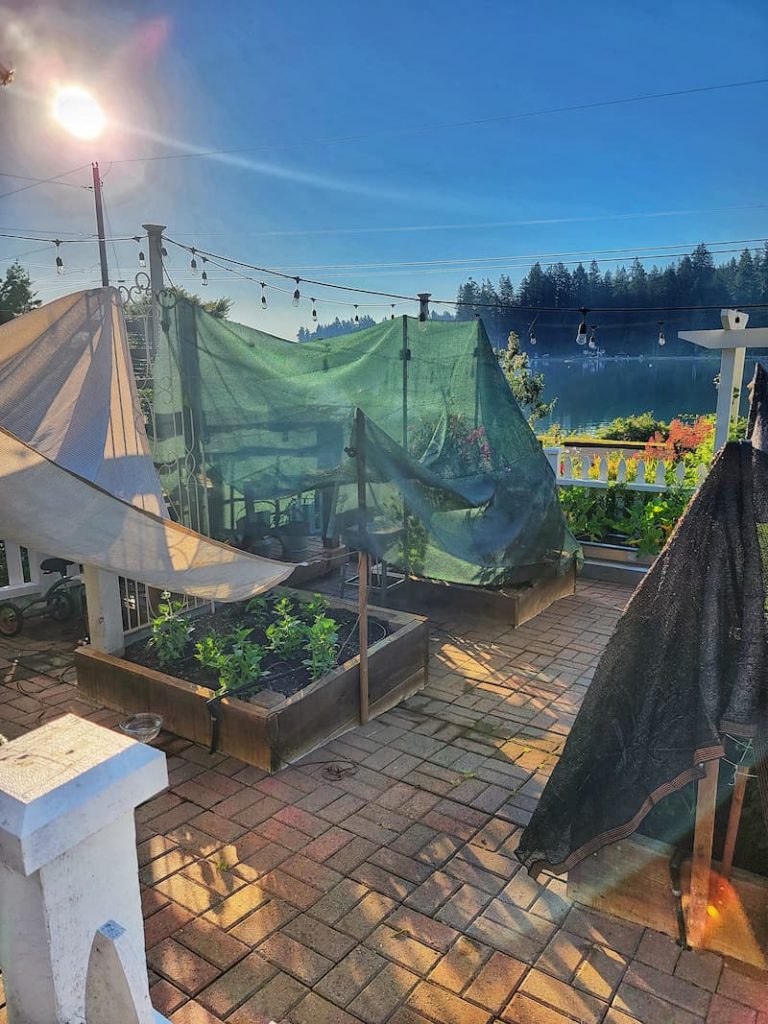
As an Amazon affiliate, I earn a commission from qualifying purchases at no additional cost to you. My blog also features other affiliate links for your convenience. Click here to read my privacy policy.
What Temperature is “Too Hot” for Plants?
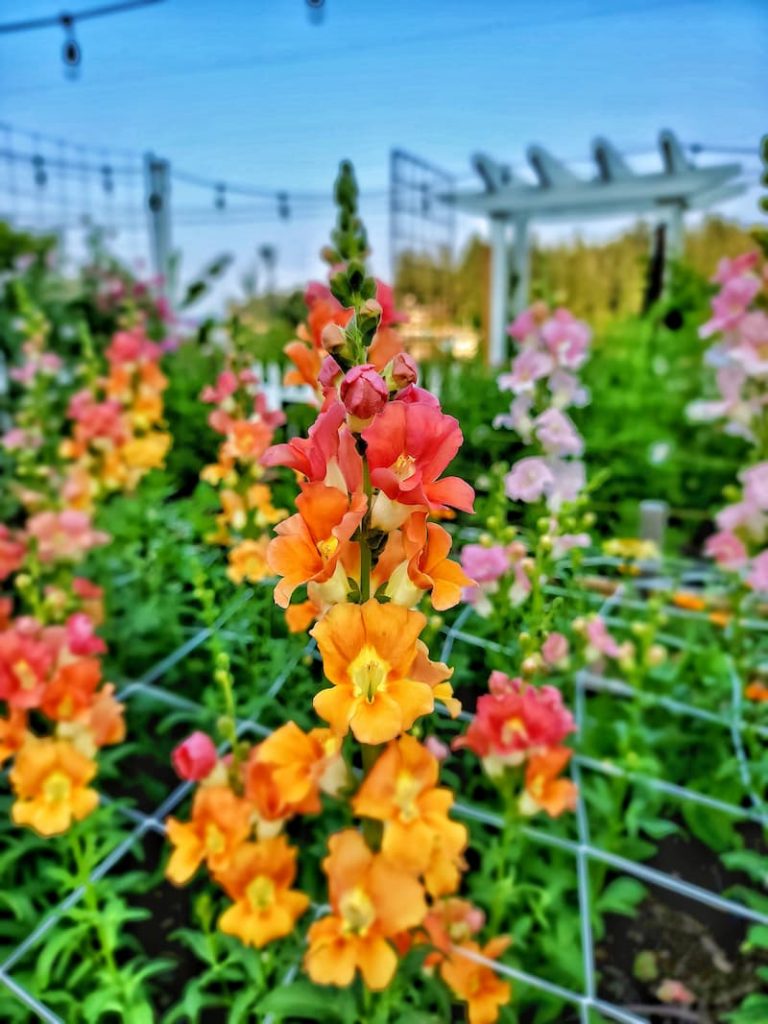
Determining what temperature is “too hot” for plants can be tricky. It really depends on the plant species, their native climate, and their ability to adapt to different conditions.
Generally, temperatures above 85°F (29°C) can start to stress many common garden plants, and temperatures exceeding 100°F (38°C) can cause significant damage, especially if sustained over a period of days.
Climate Zones and Plant Adaptability
Plants are acclimated to specific climate zones determined by temperature ranges, humidity levels, and precipitation patterns. The USDA Hardiness Zone Map is a useful tool for gardeners to understand which plants are likely to thrive in their local climate.
Cool-Climate Plants
Plants native to cooler regions, such as many vegetables (lettuce, spinach, peas) and certain perennials (hostas, ferns), often struggle when exposed to high temperatures.
These plants are typically acclimated to thrive in temperatures ranging from 60°F to 75°F (15°C to 24°C). When temperatures soar above 85°F (29°C), these plants can experience heat stress, resulting in wilting, sunburn on leaves, and reduced growth.
Warm-Climate Plants
Plants native to warmer regions, such as cacti, succulents, and Mediterranean herbs (rosemary, thyme, sage), are adapted to withstand higher temperatures and prolonged periods of heat. These plants often thrive in temperatures up to 90°F (32°C) or higher and have developed thick leaves or waxy coatings to conserve water.
The Duration of Hot Temperatures
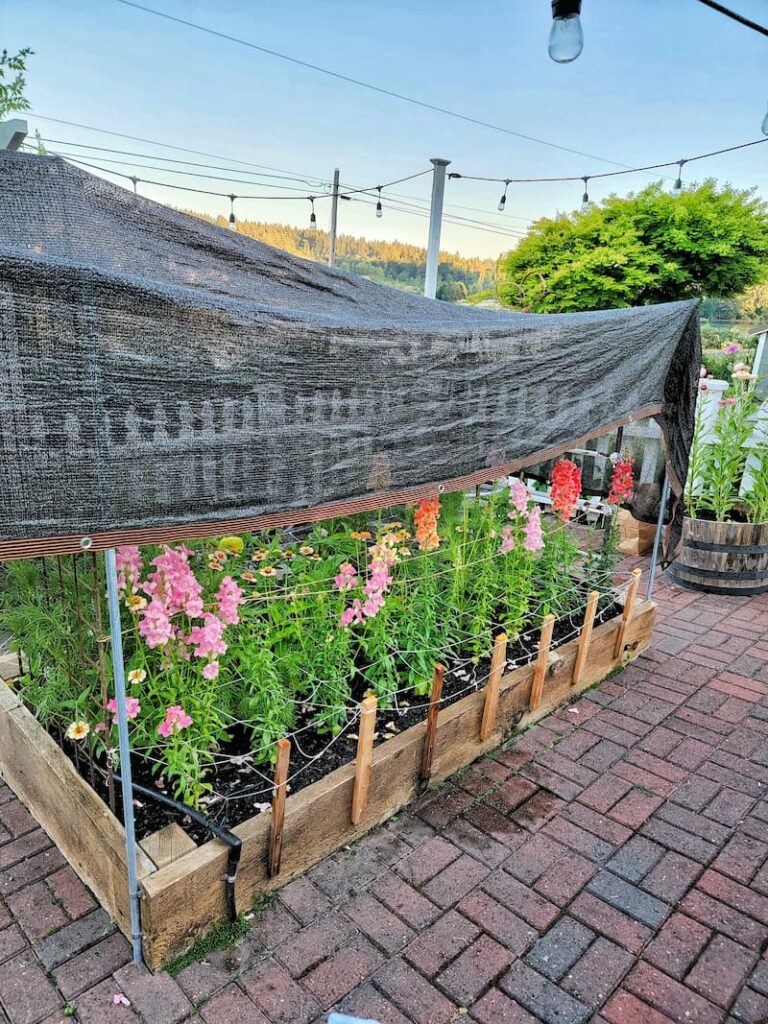
The impact of heat on plants also depends on the duration of the high temperatures.
One Hot Day
A day of extreme heat can temporarily stress plants, but most healthy plants can recover quickly if well-watered and shaded.
Short-term heat can cause leaves to wilt or scorch, but the damage is often superficial and reversible.
Prolonged Heat Waves
Extended periods of high temperatures can be far more damaging. Prolonged heat can lead to severe dehydration, as the rate of water loss through transpiration exceeds the plant’s ability to uptake water from the soil.
Lengthy high temperatures can also disrupt the plant’s metabolic processes, leading to stunted growth, leaf drop, and, in severe cases, plant death.
Additional Factors Influencing Heat Stress
Humidity
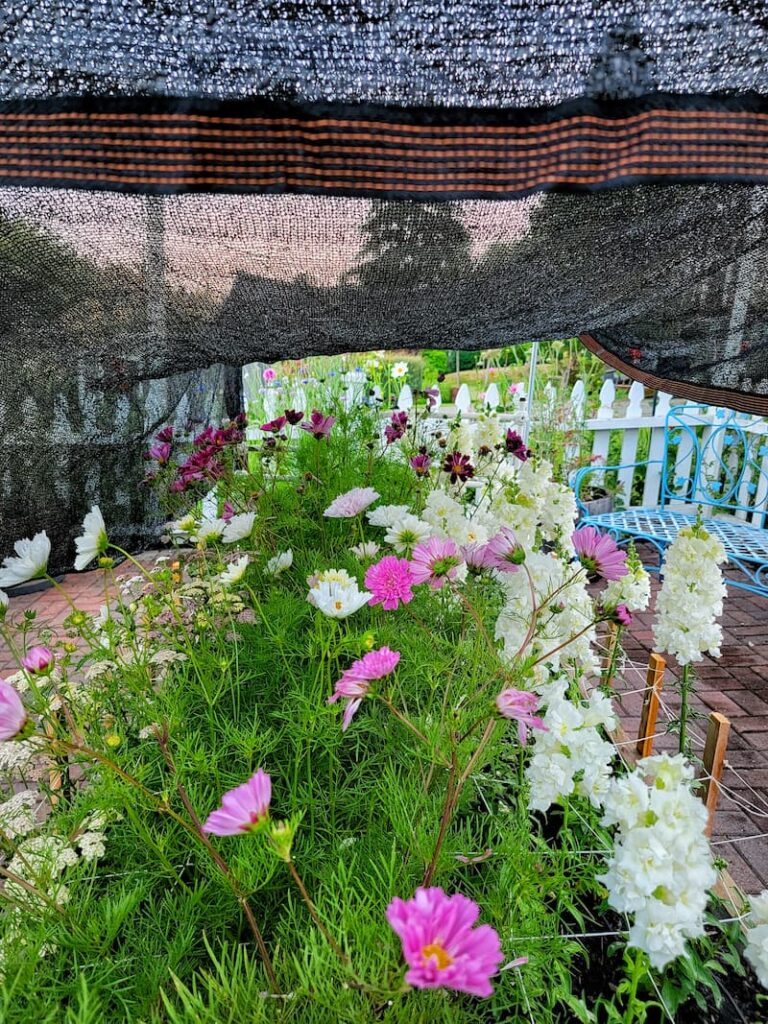
Low humidity levels heighten heat stress as plants lose moisture more rapidly. High humidity can sometimes help reduce heat stress by reducing the amount of water released from a plant’s leaves into the environment, but it can also increase the risk of fungal diseases.
Soil Type
Sandy soils drain quickly and dry during heat waves, while clay soils retain moisture longer but can become compacted and reduce root oxygenation.
Plant Maturity
Young seedlings and newly transplanted plants are more vulnerable to heat stress than established plants with well-developed root systems.
Signs of Heat Stress
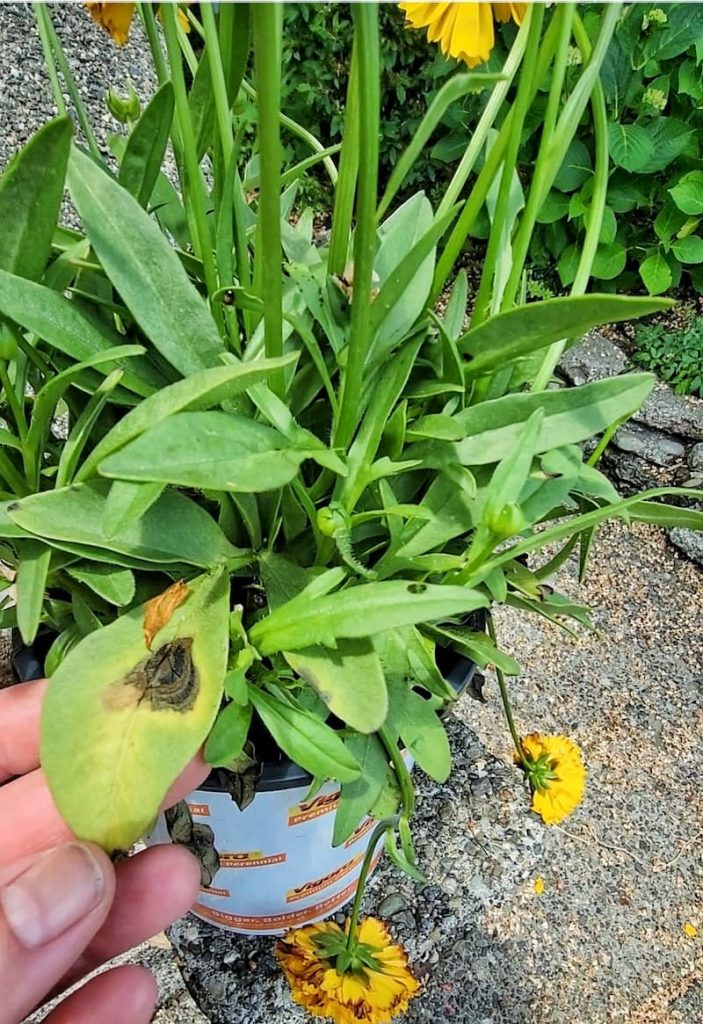
When plants become stressed by the heat, they will often show the following signs…
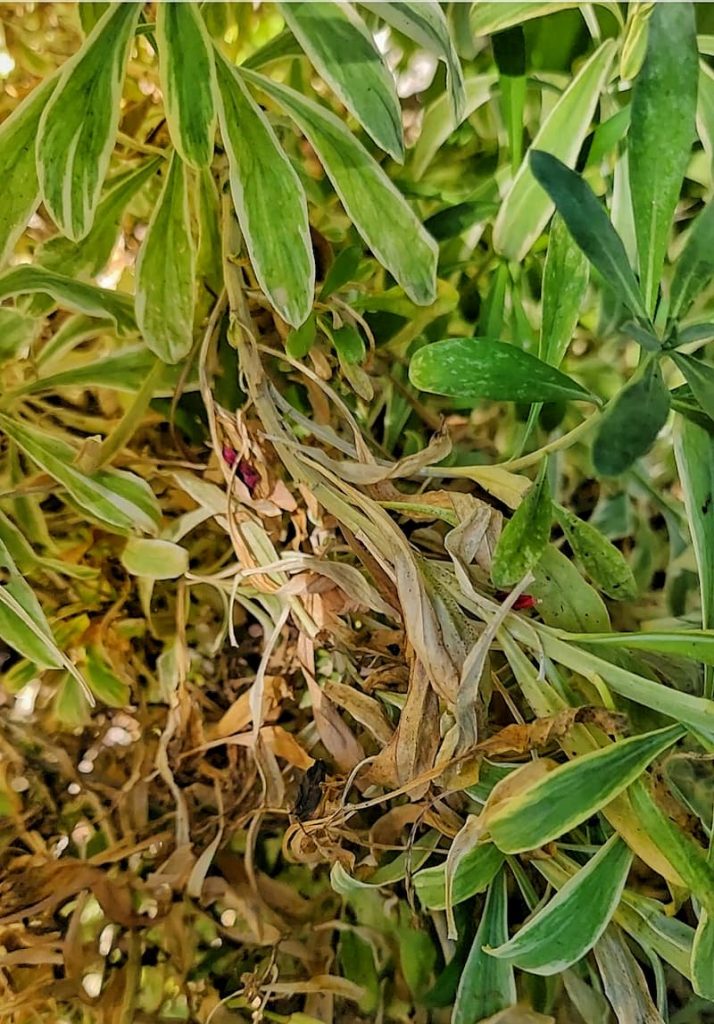
Many plants shed some of their foliage to save water. Vegetable crops can have difficulty producing in excessively hot weather.
Annual flowers and vegetables planted in containers can die after just a few days without water.
Sadly, I had just made a trip to the local nursery days before the first heatwave of the summer, and I found out the hard way that new plantings are at serious risk from the excessive heat. I didn’t realize that overwatering is just as bad, and I lost several plants because I gave them too much water.
Should You Grow a Heat-Resistant Garden?

Growing a heat-resistant garden is practical for many gardeners, especially as climate change influences weather patterns, leading to hotter summers and more frequent heatwaves.
Here are several reasons to grow a heat-resistant garden.
Benefits of a Heat-Resistant Garden
Resilience to Extreme Weather
Heat-resistant plants are better prepared to withstand prolonged periods of high temperatures, reducing the risk of plant loss during heatwaves.
Water Conservation
Many heat-resistant plants are also drought-tolerant, requiring less frequent watering. This can lead to significant water savings, particularly in regions with water restrictions or scarcity.
Lower Maintenance
Gardens that grow heat-tolerant plants typically require less watering, shading, and pest control maintenance, making them ideal for busy gardeners or those wanting a low-maintenance landscape.
Sustainability
Growing plants suited to your local climate can help reduce the excessive water, fertilizers, and other necessities for sustaining non-native plants.
Biodiversity
Heat-resistant gardens can support local biodiversity by incorporating native plants, which provide habitats and food sources for local wildlife, including pollinators like bees and butterflies.
19 Ways to Protect Your Garden from Extreme Heat
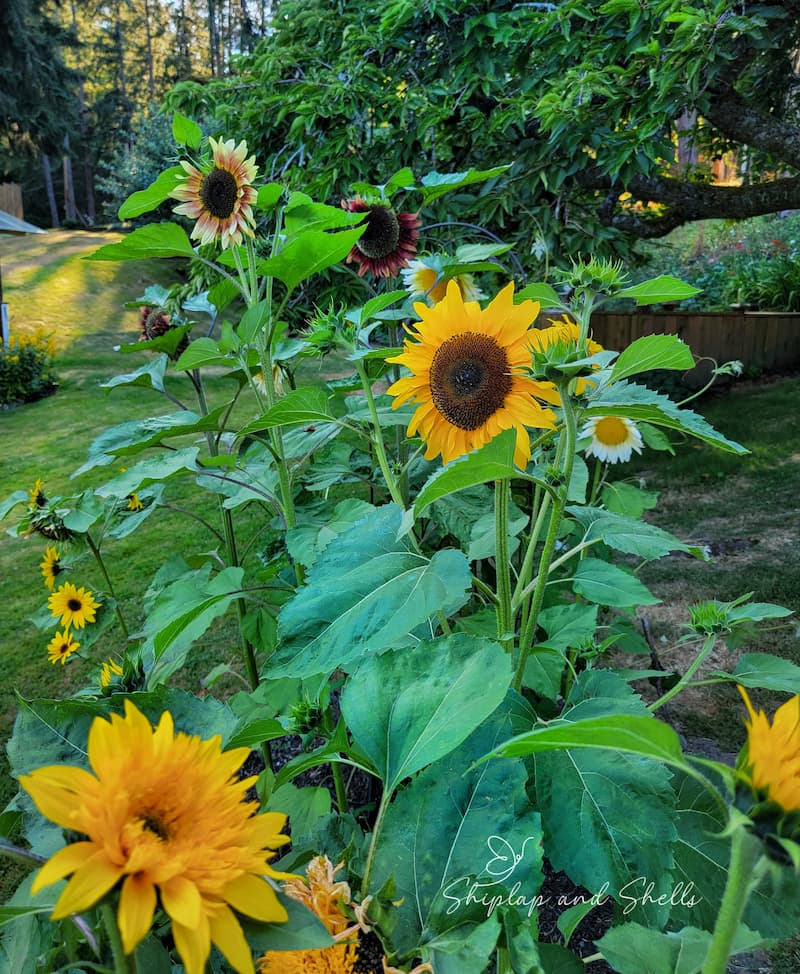
With the right strategies and proactive care, you can shield your garden from the worst effects of the heat. From watering techniques to creating natural shade, there are numerous methods to help your plants thrive even in scorching conditions.
Here are 19 effective ways to protect your plants from extreme heat, ensuring a healthy and resilient garden throughout the hottest months.
Water Plants in the Morning to Protect Against Heat

Watering in the early morning is the best option before the sun starts shining brightly on your plants. If you water later in the day, you risk the water evaporating before it reaches the plant’s roots, causing the leaves to burn.
Use Soaker and Irrigation Hoses
Irrigation or soaker hoses are the most efficient way to water your garden. These hoses slowly bring water to the plant’s roots before evaporating. You also get the bonus of growing fewer weeds in areas without plants. We use a drip irrigation system in our garden that has been customized for our specific needs, and we can add micro-sprinklers as needed.
If these garden irrigation methods are not an option, hand watering your plants is better than using sprinklers in the yard. Sprinklers will most likely miss areas needing water in the garden and will not soak the roots.
Provide Plants with Deep Watering
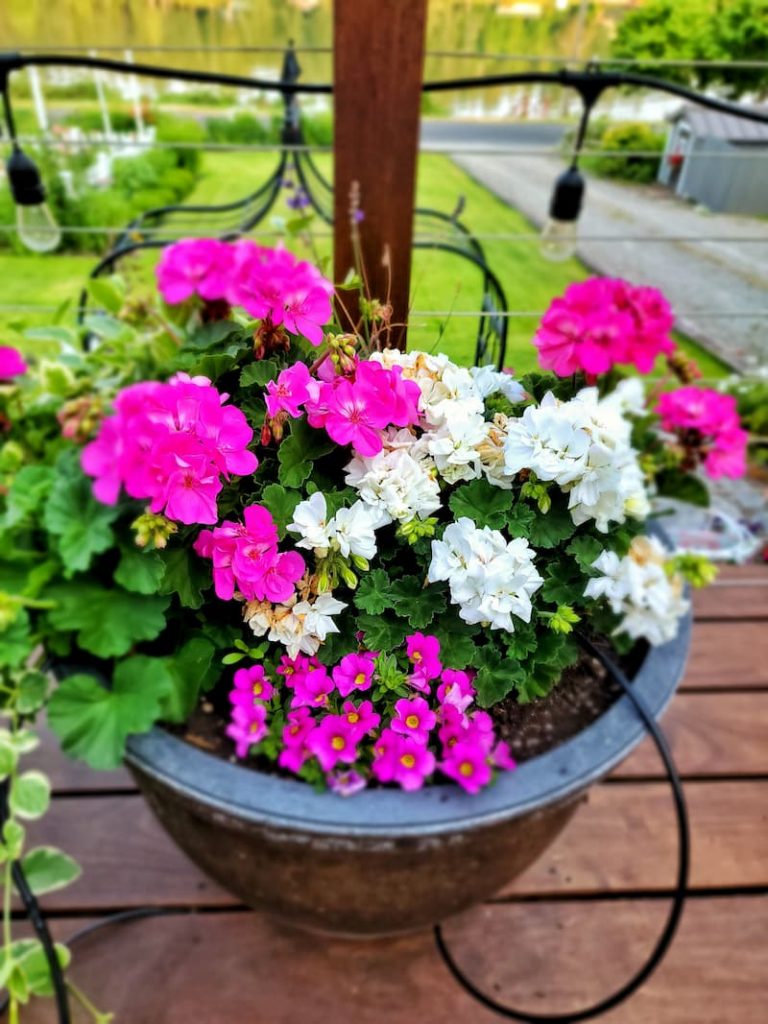
Deep watering the root zone for an extended period is the best way to protect your plants from extreme heat. If you know periods of hot weather are on the way, deep water your garden the night before when the air is cool.
Avoid Overwatering
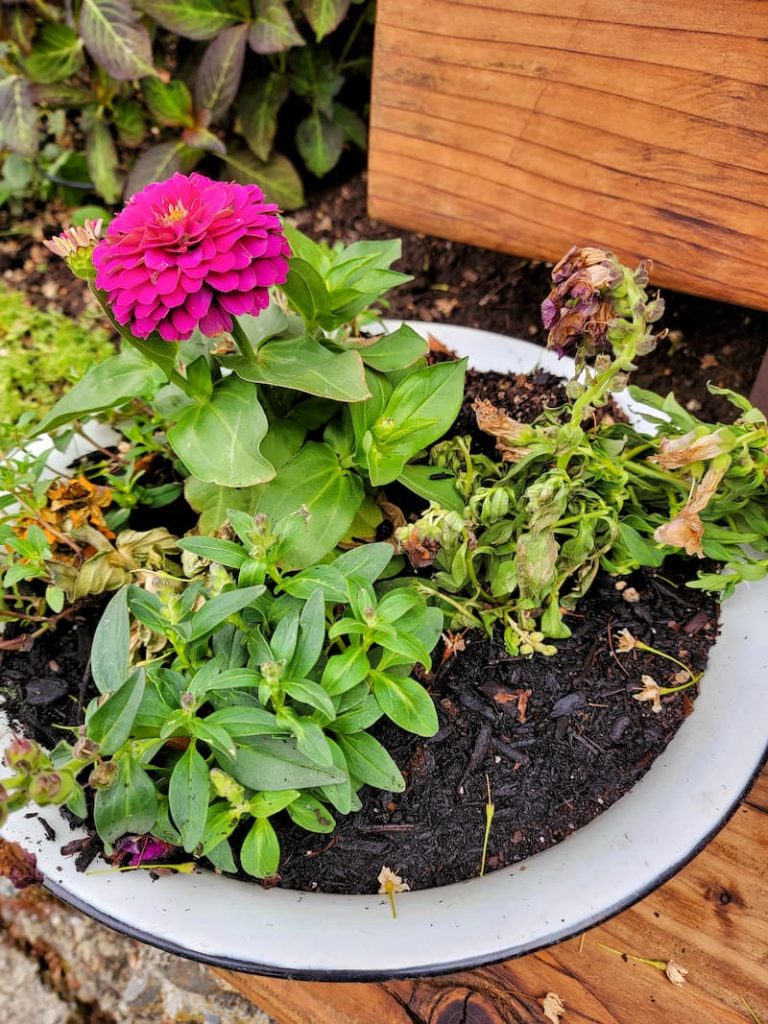
I learned a lesson on this one! I found that I was overwatering my newly planted flower containers. The annuals were wilted so badly that they couldn’t be revived, and the soil was drenched.
Did you know that when a plant is overwatered, the excess moisture in the soil can cause bacteria to develop and lead to a lack of oxygen, creating fungal disease? Apparently, I didn’t!
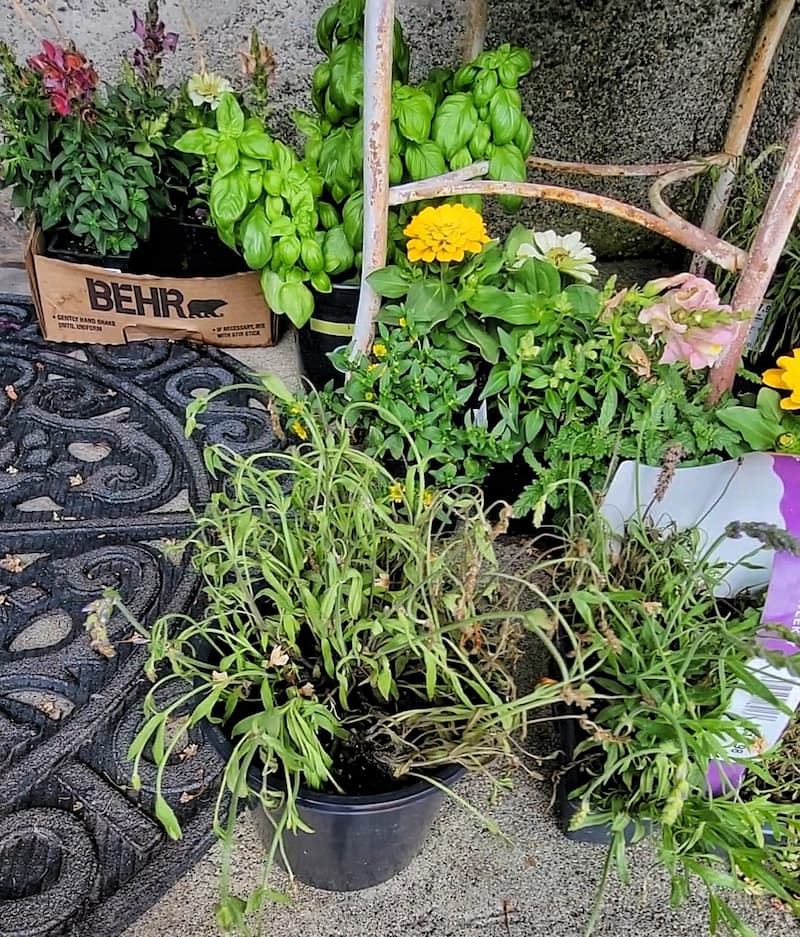
If you’re unsure if your plant needs water, test the soil before you water it by sticking your finger about an inch into the ground or container to see how moist it is.
A plant can have enough water and still wilt from the hot sun. Don’t water unless the soil is dry.
Don’t Wet Plant Leaves During Extreme Heat
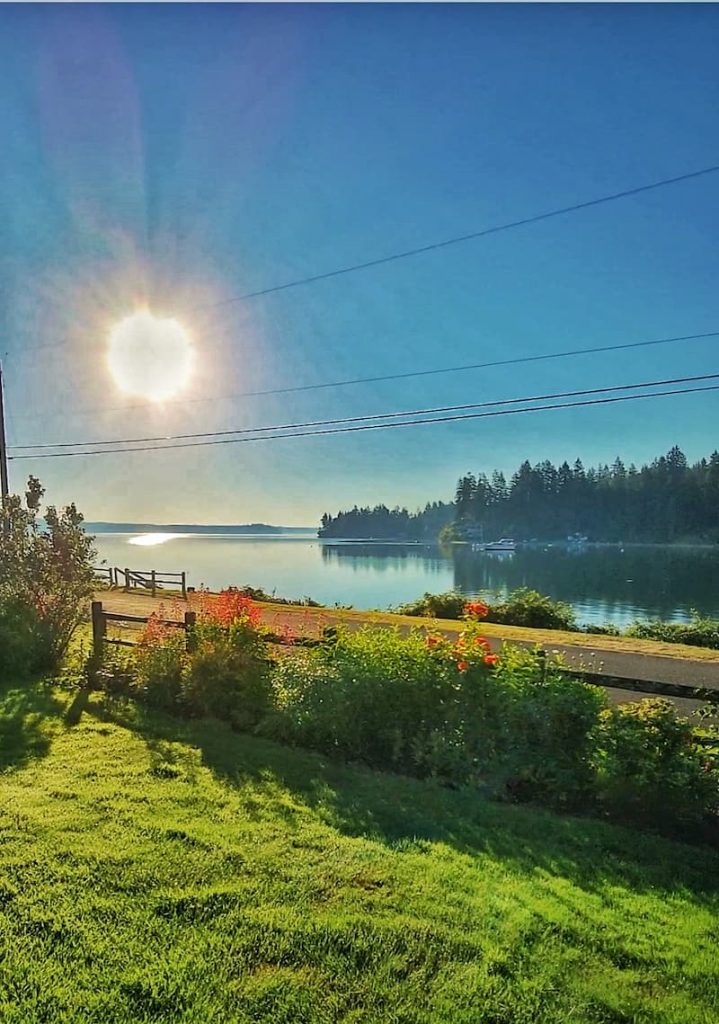
Spraying the plant leaves in the middle of the day can cause extreme damage to them. The water droplets magnify the sun on the leaves, intensifying the heat.
If you want to spray the leaves to cool down your plant, wait until the sun has set or the plant is in the shade.
Add Mulch to Garden Beds
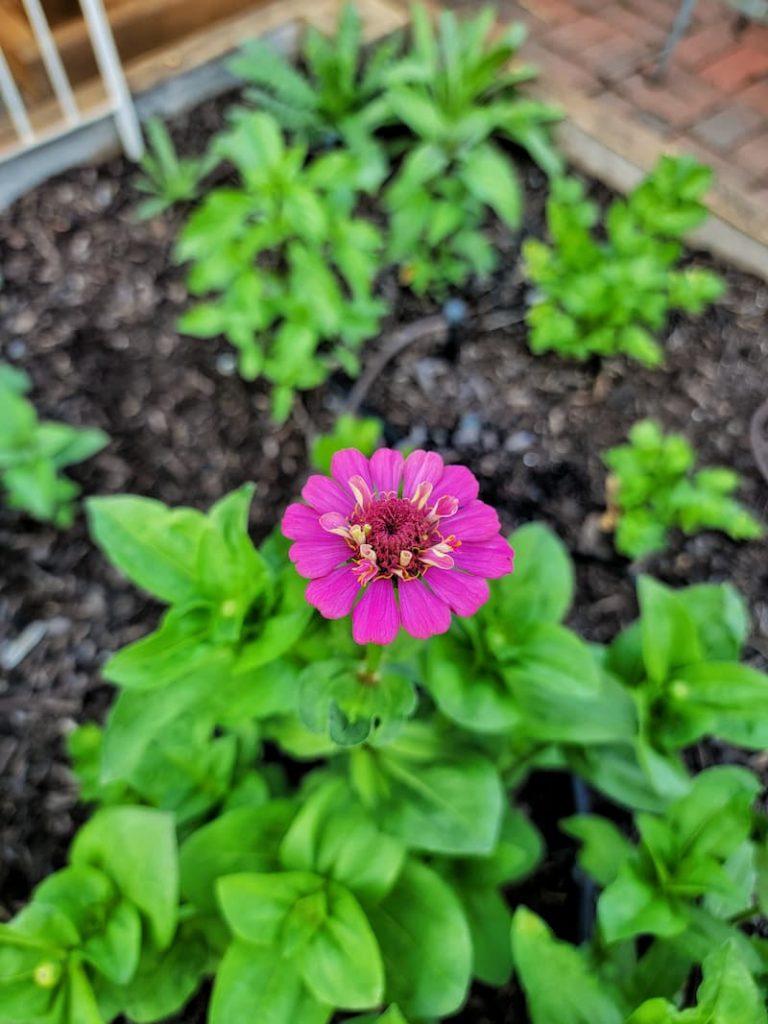
Mulch benefits the garden, especially during the summer heat. Here are some advantages of adding a layer of mulch to your garden to protect it from extreme heat…
Don’t Disrupt the Soil
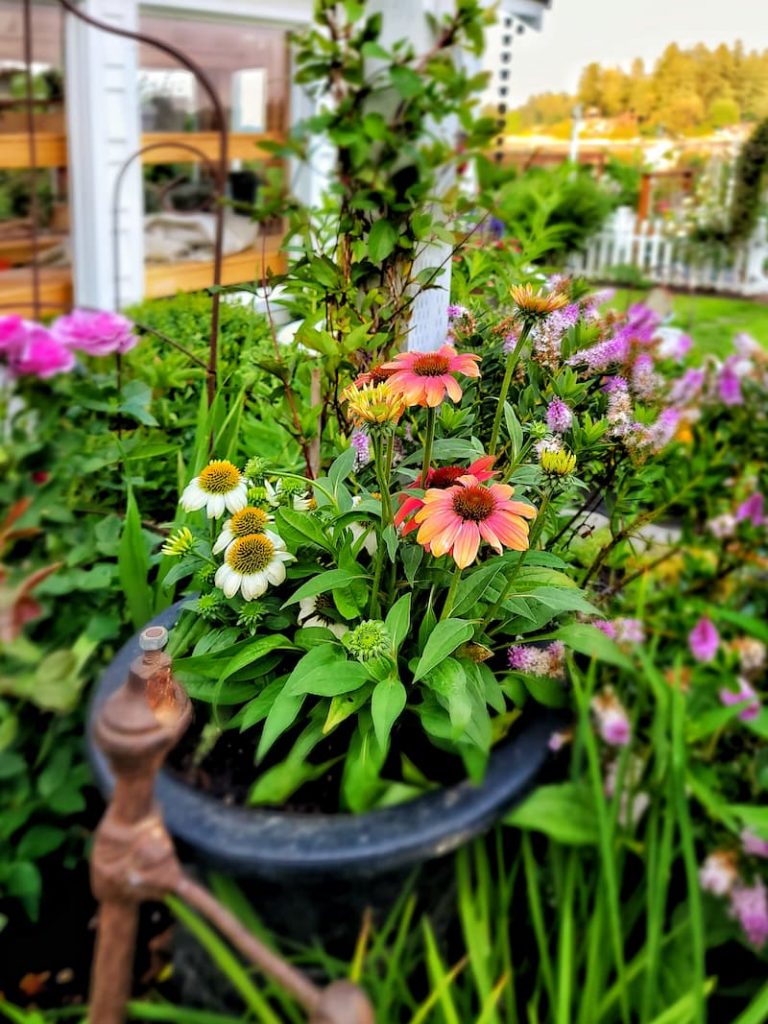
Try to leave your garden soil alone during the hot temperatures. If digging or weeding the garden beds, you could release trapped water.
Provide Shade to Protect Plants from Heat
Use Shade Cloth
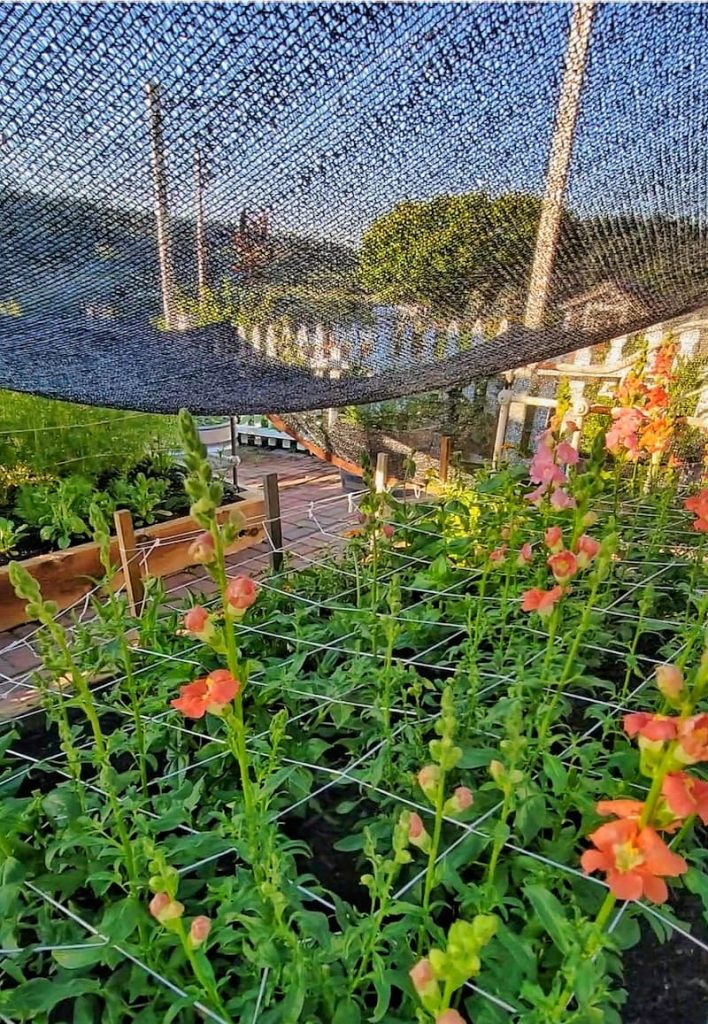
You can protect your most vulnerable and young plants by using shade cloth, a piece of fabric used in gardens to protect plants from too much sunlight.
Use shade covers for temporary shade to diminish sunlight and diffuse its rays. The shade cloth material allows air circulation and moisture to reach the plants.
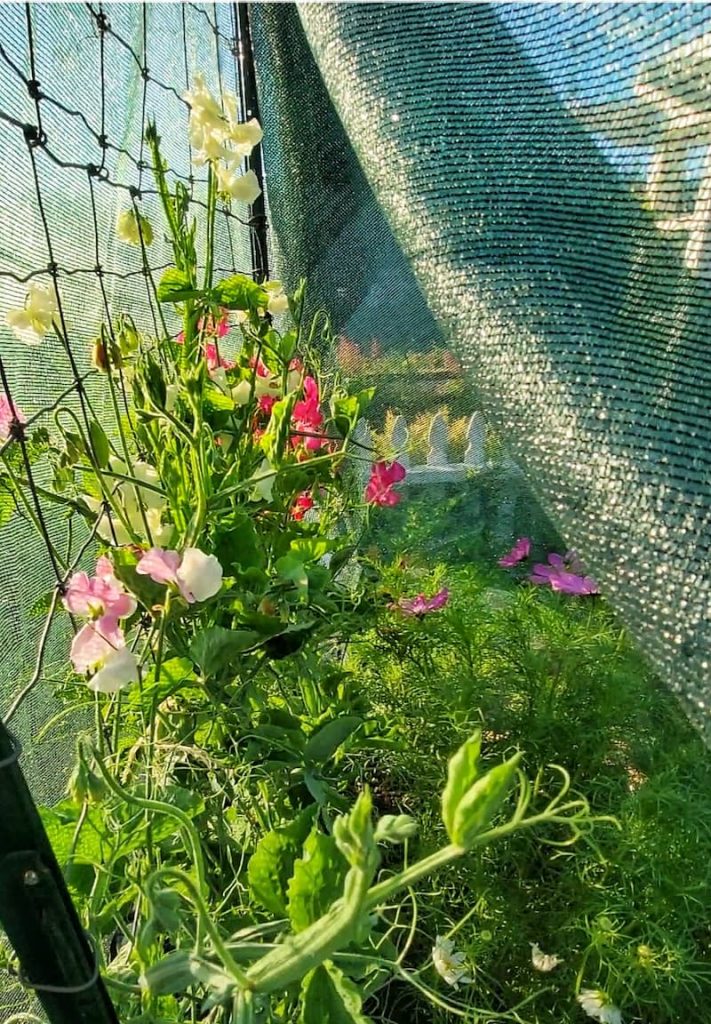
There are different shade factor options to choose from. A high shade factor is recommended for heat-sensitive and newer plants, while a low shade factor is recommended for older and more established plants. For good aeration and light, it’s important not to lay the cloth directly on your plant.
I haven’t tried this, but I have read that spraying water on the shade cloth will cool your plants.
Use an Umbrella
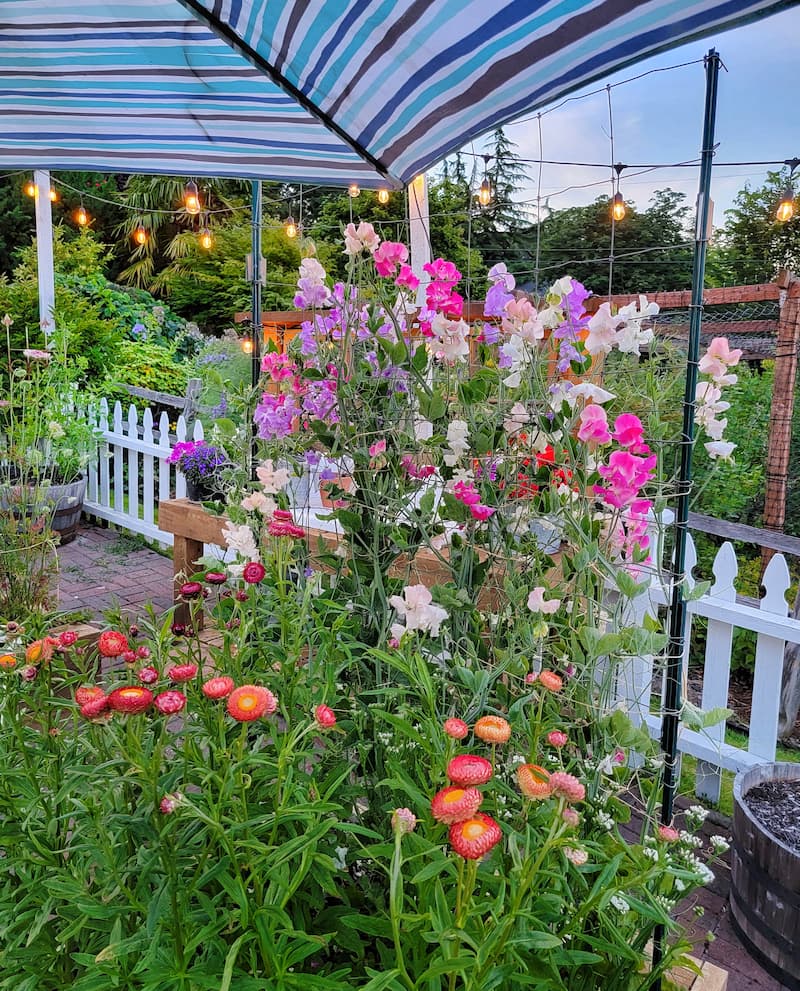
Shading your plants with an umbrella is one of the easiest ways to protect your garden from extreme heat. A tilted umbrella is the best way to keep plants in full shade, but you’ll still have to move the umbrella as the sun moves throughout the day.
Other Shade Options
Use sailcloths, old tablecloths, towels, and even old sheets if you’re in a pinch.
If your only option is a dark cloth, keep it several inches above or away from the plants. They will absorb the heat and burn the foliage that’s touching.
Use Shade Structures for Plant Protection
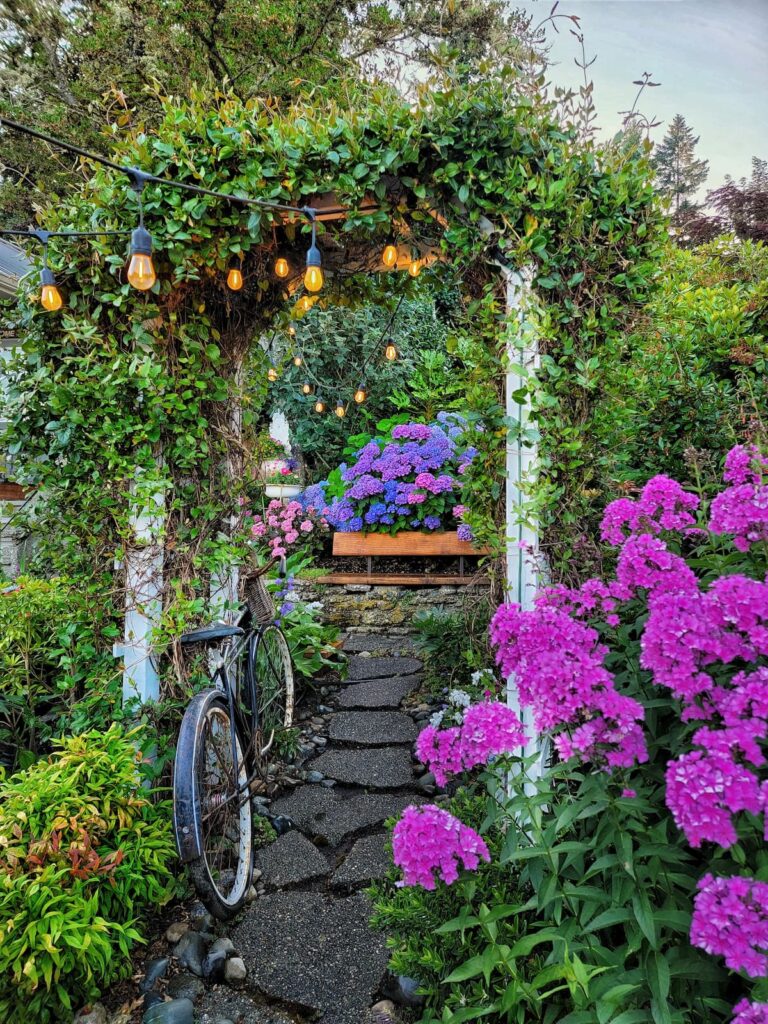
Adding shade structures to your garden is a practical and effective solution to create a cooler plant microenvironment. Shade structures, such as pergolas and arbors with growing plants, help reduce direct sunlight’s intensity, lowering the ambient temperature and preventing heat stress.
These structures safeguard delicate plants from sunburn and dehydration and extend the growing season by blocking the full sun.
Plant in a Shady Location
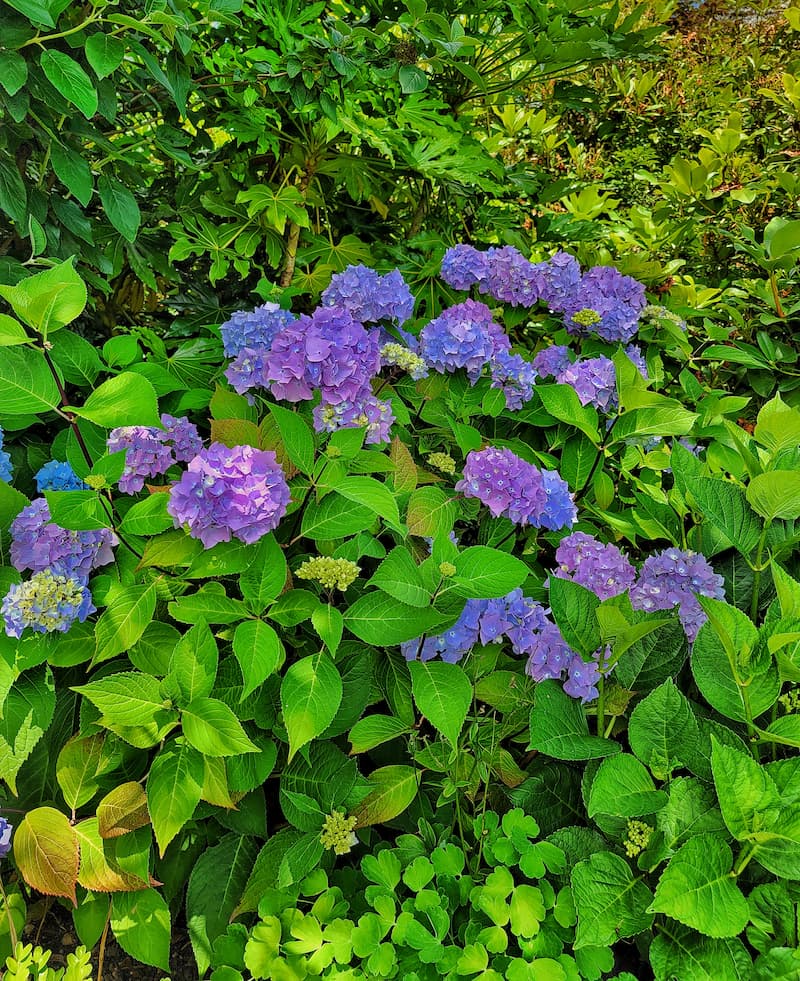
If you live where extreme heat is common throughout the summer, consider planting your garden in a location with more permanent shade.
Create Natural Shade with Companion Planting
Companion planting is a gardening technique where different plant species are grown together to benefit each other in various ways, such as pest control, pollination, and maximizing space.
One significant advantage of companion planting is creating natural shade, protecting more delicate plants in your garden from extreme heat.
Move Container Plants Into Shady Areas
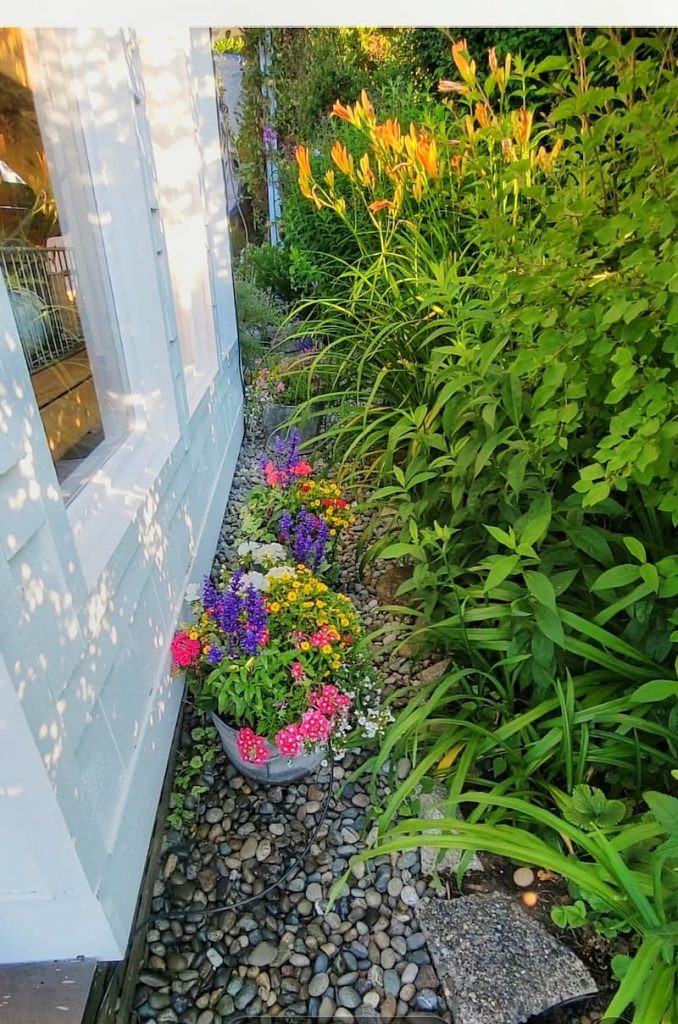
During extreme heat, move your containers, pots, and planter boxes to a shady spot in your garden. If the container plant requires some sunlight, move them where they’ll get the early morning sun.
Avoid Dark-Colored Containers
Try to avoid planting flowers and plants in dark-colored containers. They absorb more heat than lighter colors and can burn the plant’s roots. You can try putting potted plants inside other larger pots with good drainage for more shade and insulation.
Containers tend to dry out faster and need to be watered more often than garden plants. Increase the water you give your container in hot temperatures so the soil does not dry out. Remember to check the moisture level so you don’t overwater your plants.
Swap Out Or Seal Terracotta Pots
Terracotta is a porous material that can absorb water, which might not be ideal in all gardening situations.
Sealing terracotta pots involves applying a protective coating to its surface to reduce its porosity and improve its durability.
Don’t Mow the Grass During a Heatwave
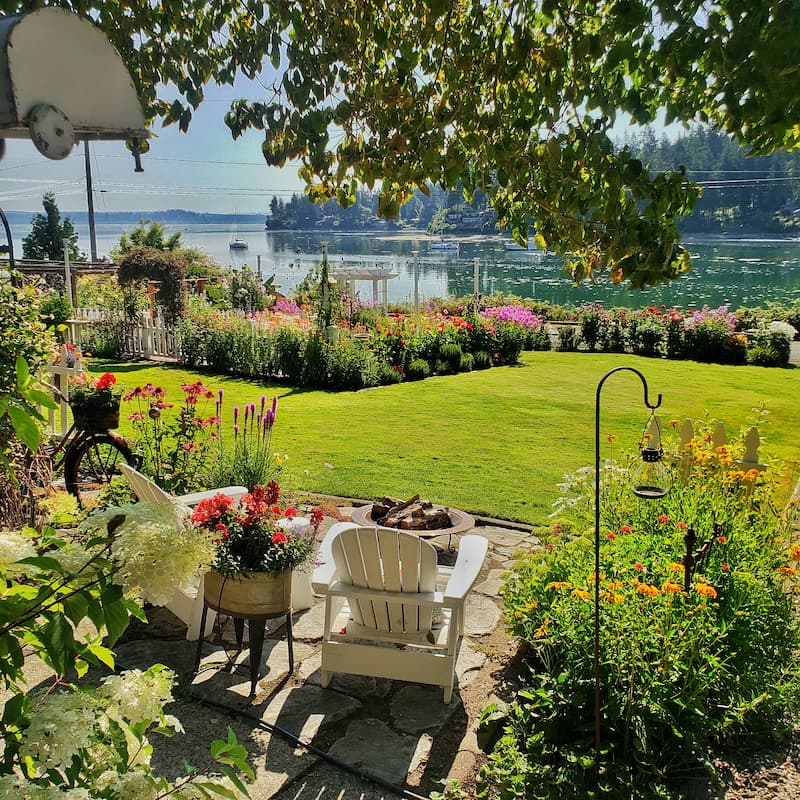
Keeping your lawn at least 3 inches long can add shade to the grass, which will help retain moisture in the soil.
Cutting the grass too short in extremely hot temperatures can cause…
Give Newer Plants Extra TLC
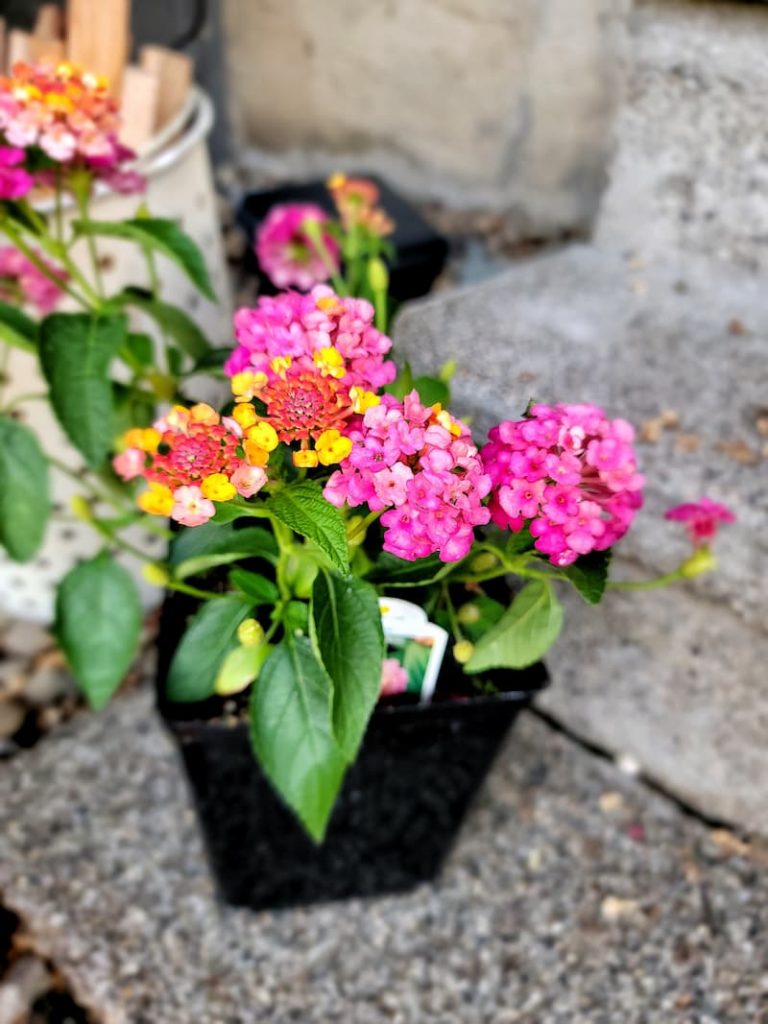
Pay close attention to new plants and vegetables whose root systems have not been established. They are more vulnerable than most plants, and there is a delicate balance between keeping them hydrated and overwatering.
Pause the Use of Fertilizers for Extreme Heat
When plants absorb fertilizers, their root systems can suffer from high heat. Compost and a low-nitrogen organic fertilizer are fine to use.
Avoid fertilizers that contain fish or manure, as these contain salts that may cause the plant to burn.
Grow Heat-Tolerant Plants
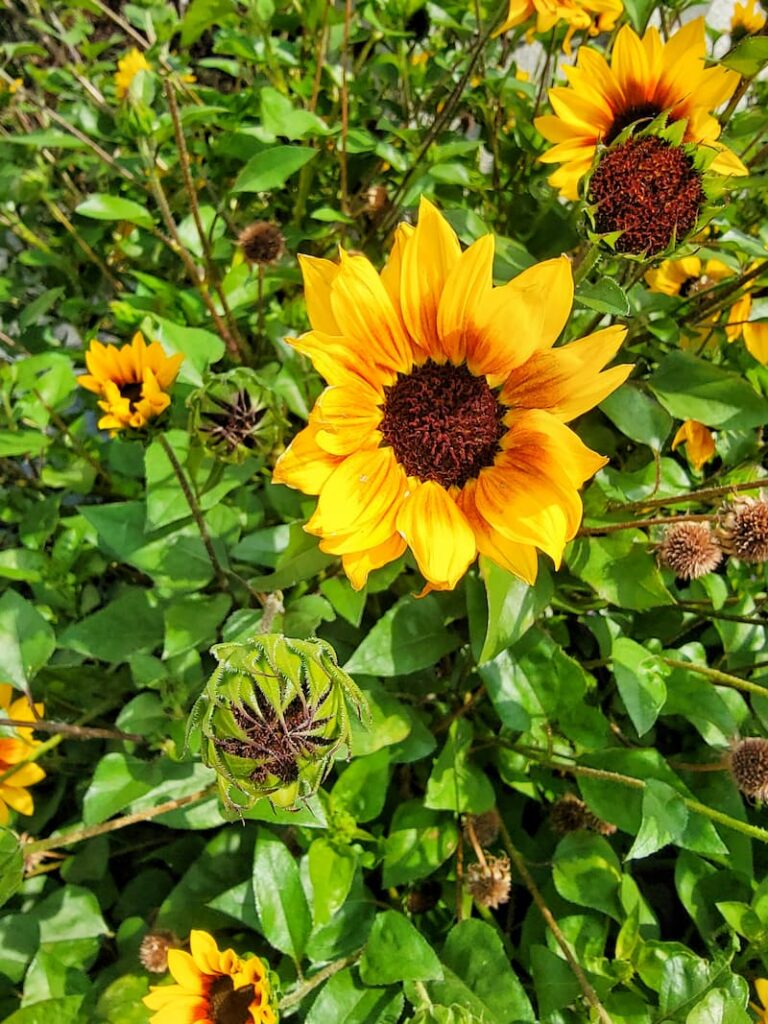
We don’t tend to get the high temperatures here in the Pacific Northwest that other gardeners experience around the country. But for those gardens that experience consistent heat, try growing more heat-loving plants that thrive in the intense heat, like zinnias, sunflowers, and cosmos.
Promote Overall Good Plant Health
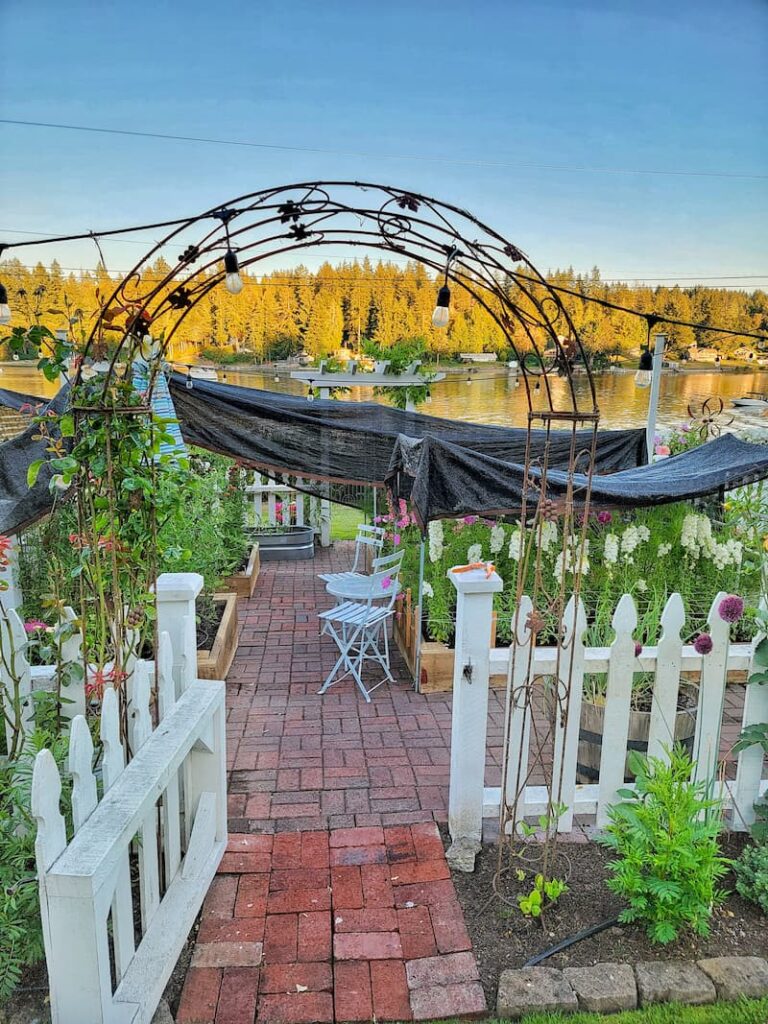
Maintaining good plant health is crucial for helping your garden withstand extreme heat. Healthy plants are more resilient and better prepared to manage stress from high temperatures.
Here are several strategies to promote vigorous plant health:
Garden Supplies and Tools
Check out my favorite garden supplies and tools for the growing season. Whether you’re looking for potting soil or deer repellent, you’ll find what I use in my own garden.
Common Questions About How to Protect Plants from Extreme Heat
Should You Water Plants Every Day In Hot Weather?
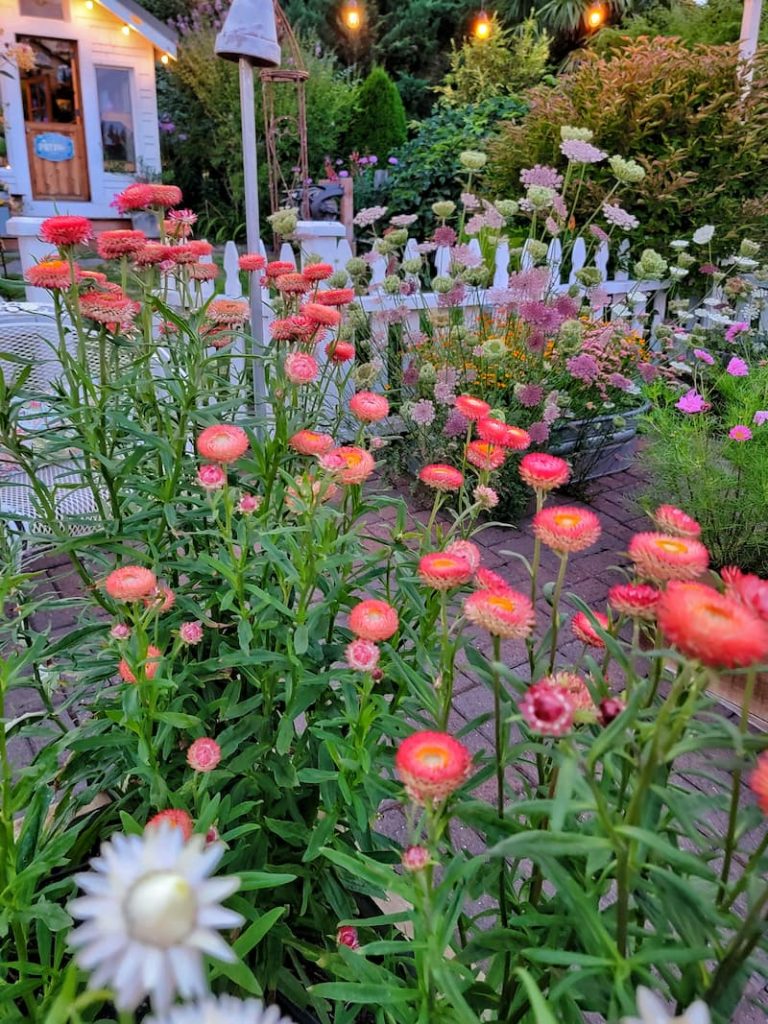
Watering plants daily in hot weather might seem logical to keep them hydrated, but it is not always the best practice. Plants’ watering needs depend on several factors, including plant type, soil condition, and weather intensity.
Can Plants Recover From Extreme Heat?
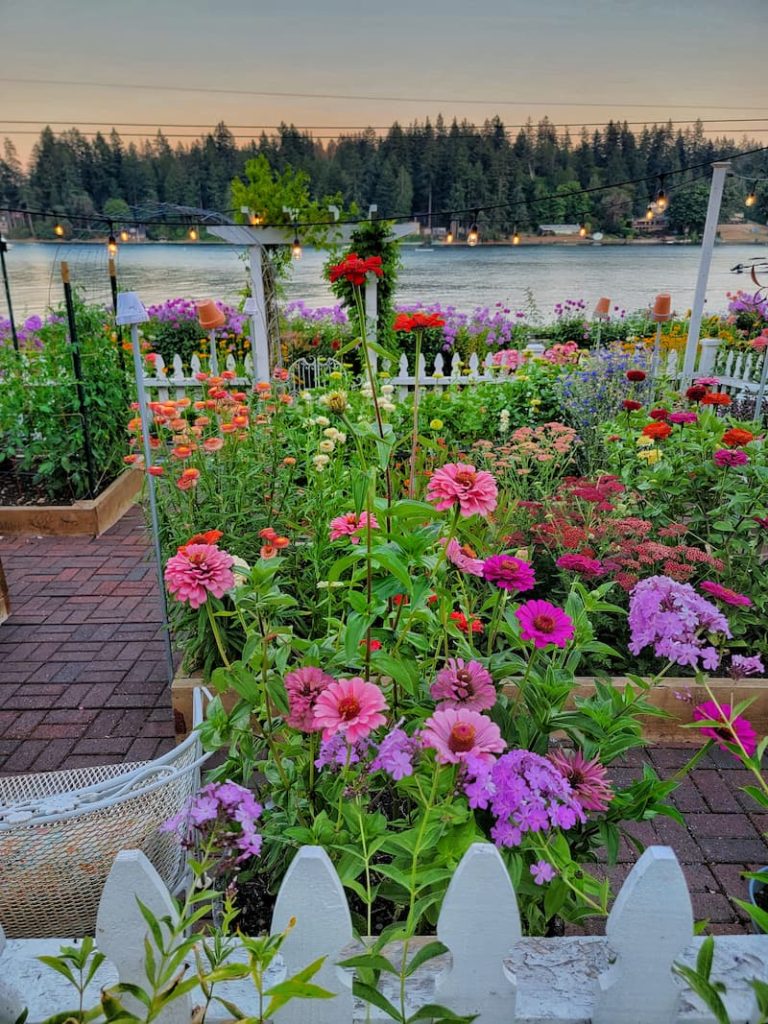
Yes, plants can recover from extreme heat, but the extent of recovery depends on several factors, including the severity and duration of the heat stress, the plant species, and the care provided during and after the heat event.
Is it OK to Water Flowers in the Heat of the Day?
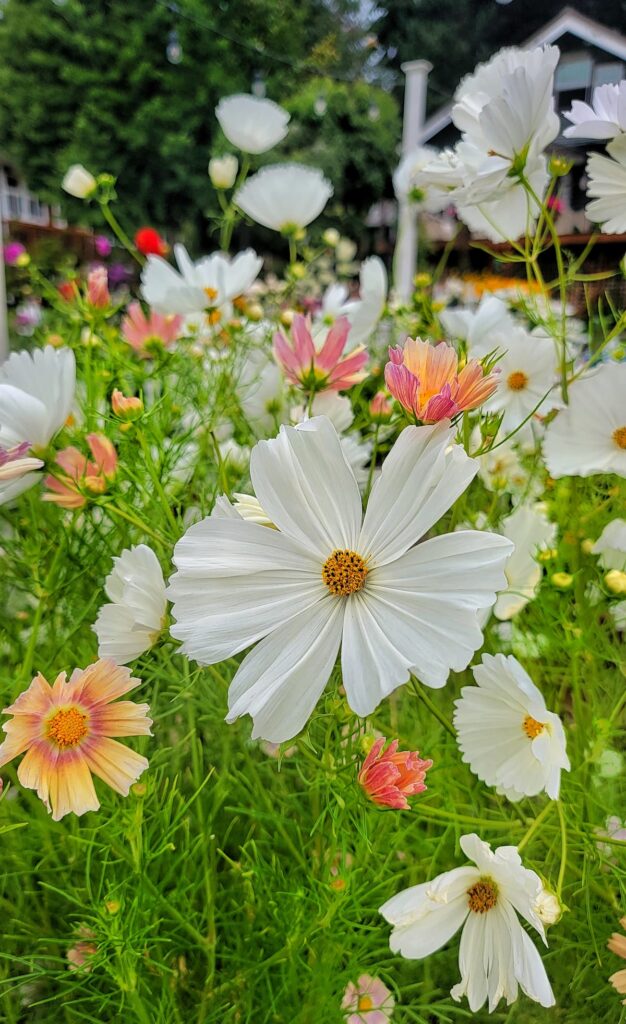
While it is technically possible to water flowers in the heat of the day, it is not the most efficient or safest practice for plant health.
The best times to water are early morning or late afternoon to ensure maximum water absorption and avoid issues related to evaporation, leaf scorching, and plant stress.
Will Flowers Come Back After Heat Damage?
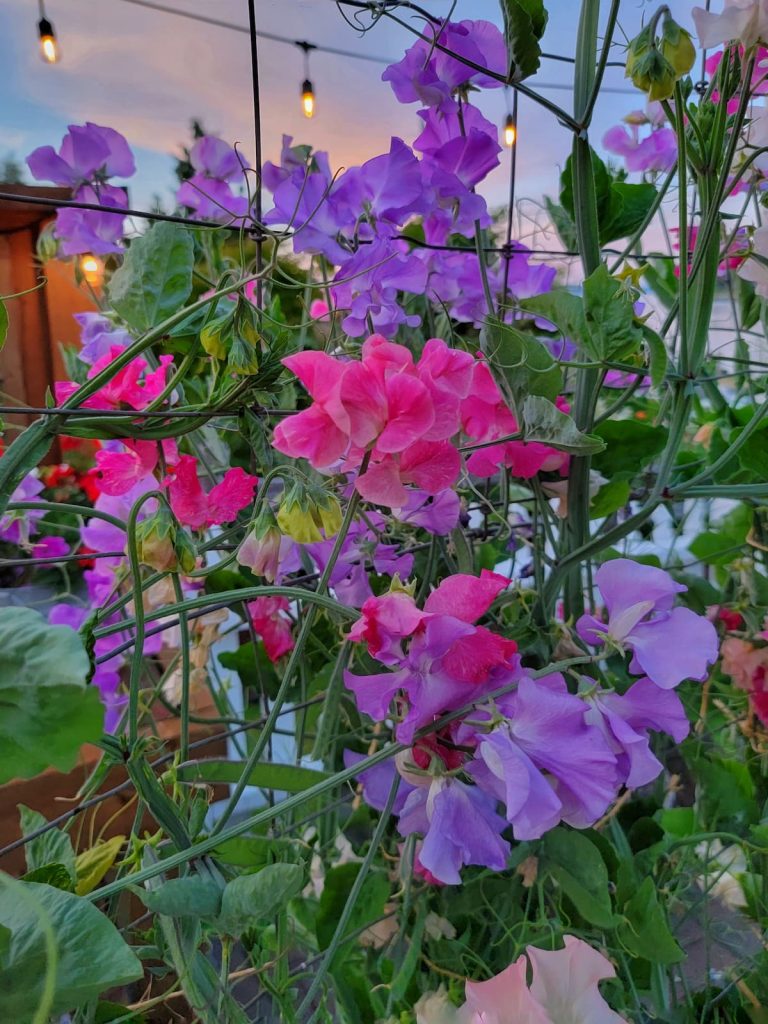
Flowers can recover from heat damage, but the success of their recovery depends on the severity of the damage, the type of plants, and the care they receive afterward.
Proper watering, shade, pruning, and soil improvements can help your flowers recover. With patience and consistent care, many flowers will rebound and thrive, even after experiencing extreme heat.
Is it OK to Plant Flowers in Hot Weather?
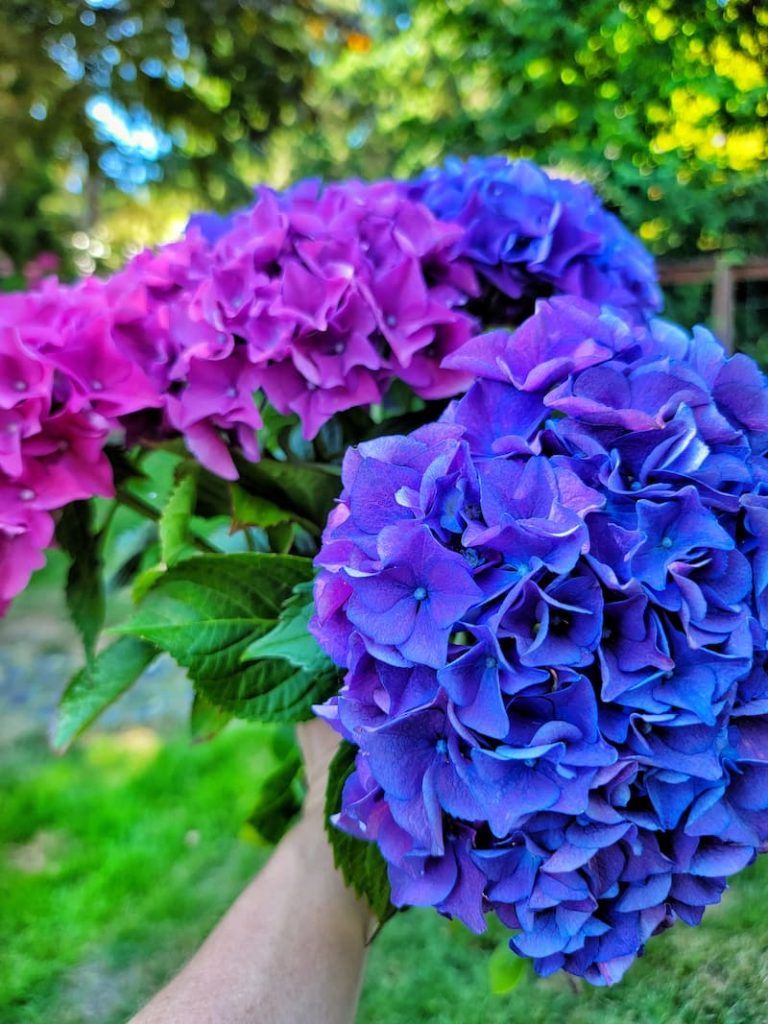
While planting flowers in hot weather presents challenges, it can be done successfully with the right precautions and care.
You can establish a thriving garden even during hot weather by choosing heat-tolerant varieties, preparing the soil properly, planting during cooler parts of the day, and providing adequate water and temporary shade.
Consistent monitoring and adjustments will help your flowers adapt despite the heat.
Final Thoughts on Protecting Your Garden from the Heat
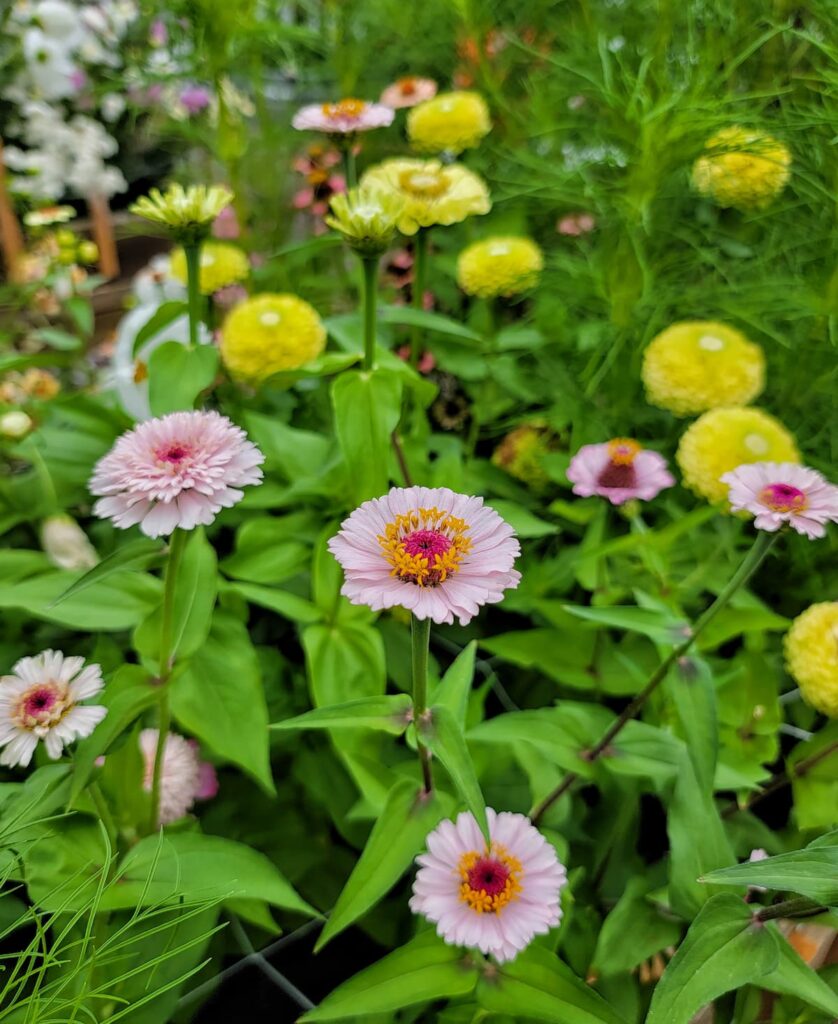
Protecting your garden from extreme heat is essential for maintaining the health and vitality of your plants. You can create a resilient garden that withstands high temperatures by implementing deep and consistent watering, mulching, providing shade, and selecting heat-tolerant varieties.
Understanding your plants’ specific needs, regularly monitoring their condition, and making timely adjustments are key to ensuring they thrive despite the heat. With thoughtful planning and proactive care, you can safeguard your garden against the stresses of extreme heat and enjoy a lush, vibrant landscape all season long.
If you have any questions or additional suggestions, please share them in the comments below. And be sure to share this blog post link with anyone who may find these gardening tips useful.
Until next time.
Happy Gardening!

I’m a self-taught hobby gardener. Everything I share on my blog is my opinion and what worked for me.
MORE POSTS
For You To Enjoy
Follow Me for More Inspiration
Shop my Amazon Storefront, LTK sources, and my favorite home decor, garden, and lifestyle products. When you purchase from one of my links, I earn a small commission, which helps me continue sharing all the content you expect on my blog.
Be sure to follow me on Pinterest, Instagram, Facebook, TikTok and LIKEtoKNOW.it. Do you like gardening? Join my Facebook Gardening Tips & Tricks group.


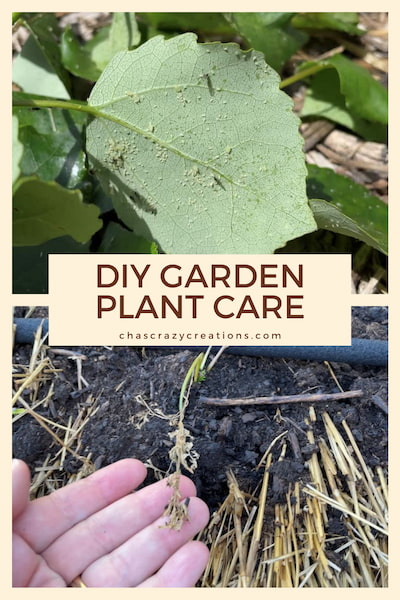
CHAS’ CRAZY CREATIONS | EASY DIY GARDEN PLANT CARE
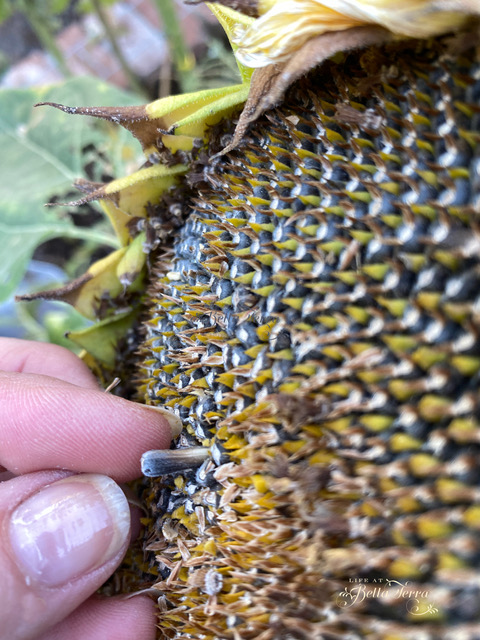


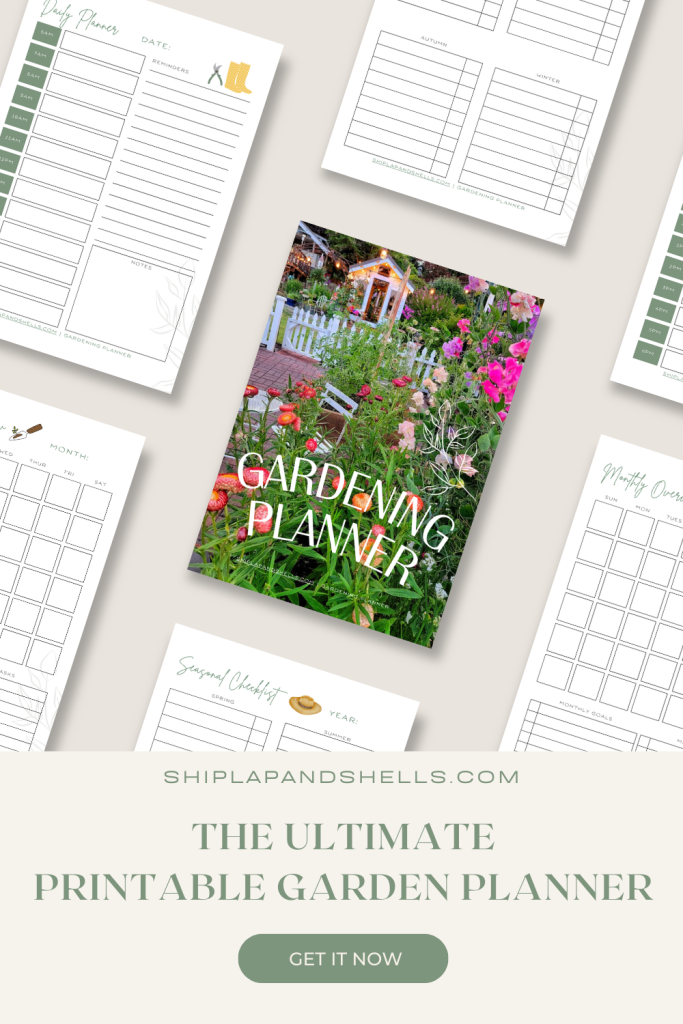
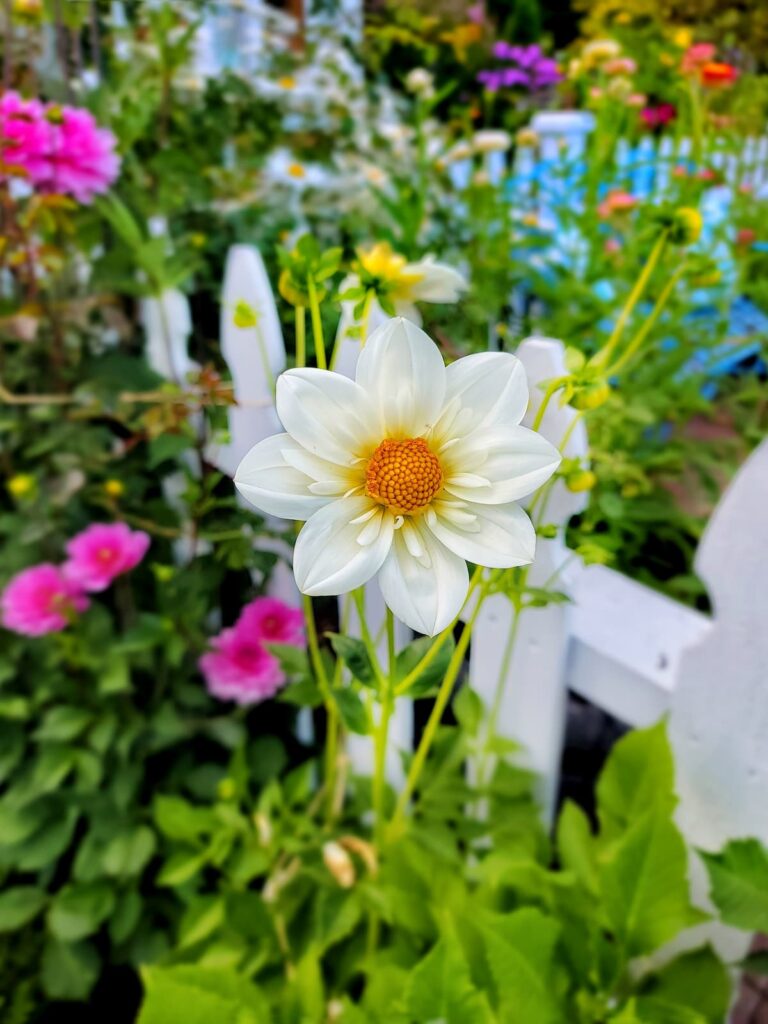


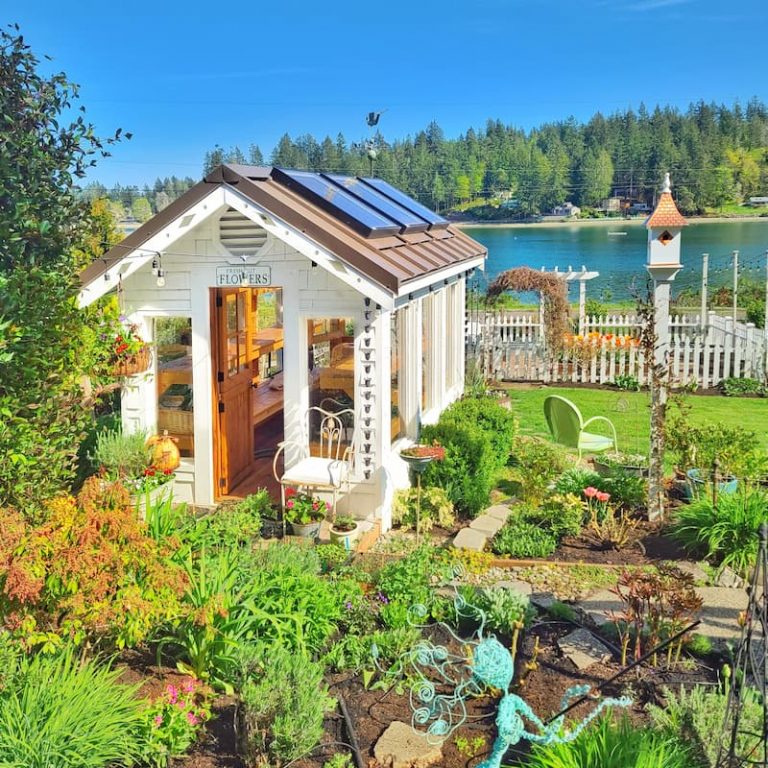
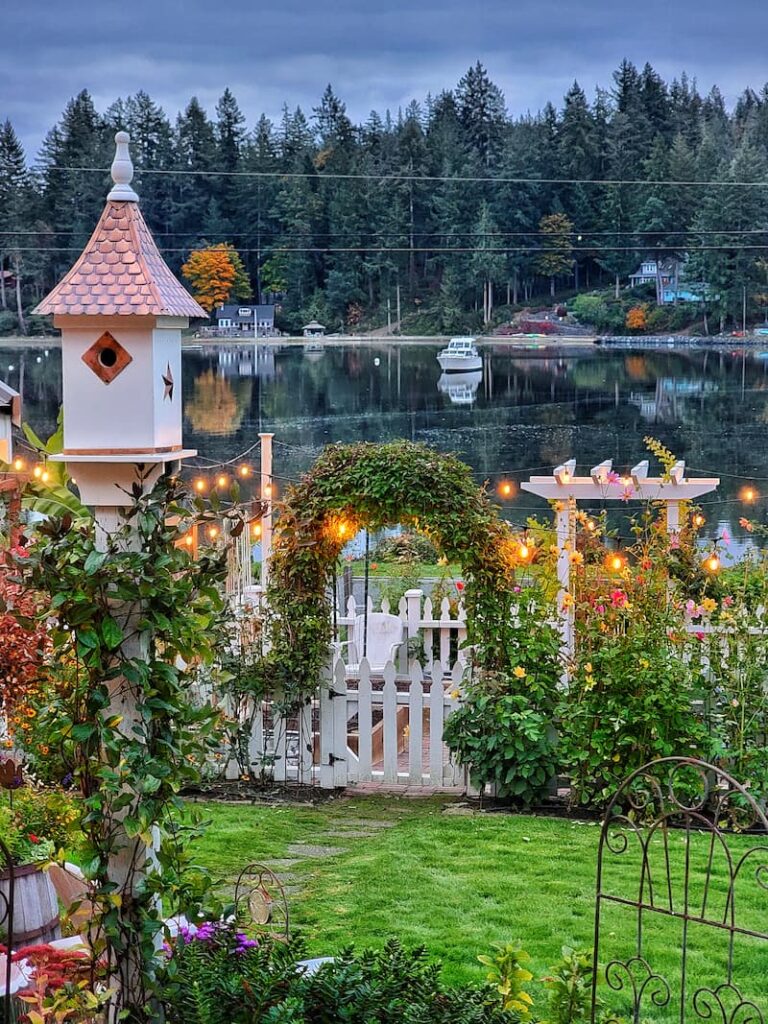
Good call on the shade cloth! I just ordered one for the dahlias the I relocated. I do have a question for you on that note. The soil where I moved the dahlias to is more clay soil. Now I’m panicking that they may not make it. Should I buy amendments and dig them up again? What do you think? I’m also is zone 8B (PNW) but I think I’m about a week behind you on what’s blooming in my yard.
Hi Melanie,
Dahlias grow best in well-drained soil so yes, you need to add organic matter like compost, well-rotted manure, or leaf mold to the soil, about 12″ deep to reach the root zone of the dahlias.
Hope this helps.
Sweet Kim, I appreciate you sharing this so much. Living in California we get a lot of high temperatures but I didn’t think about the water on the leaves being magnified by the sun. That was excellent advice! Also, ashamed cloth my poor lilac looks so decimated by the end of summer because the leaves are fried crispy Brown. Thankfully they fall off and do come back lush and beautiful in the Spring again But I have wanted to do something to help it out and I think I’ll have to get a shade cloth. Thanks again for all the good info and I hope you don’t get another big heat wave. It’s going to be a 115 for a few days and nothing under a 100 as far as a foreseeable future I really don’t like it one bit!
It’s nice at least that the plants come back the next year. I can’t tell you how much I feel for you with the 100+ degree weather you’re dealing with Dee. You need to go on a vacation! We are in the 60s today. So crazy! I hope the shade cloth helps.
Kim, What a fluke heat wave! I can only imagine the shock your plants experienced from such high heat. Welcome to my world of gardening in Arizona in the summer. Typically, I stop gardening after June and just let the garden go fallow, because no matter what I do, the high heat is just too much. Basil and peppers are about the only thing that survives. Even when I plant pumpkins they tend to ripen so quickly that I have pumpkins in July….Great tips from this very informative blog post!
So crazy to see your pumpkins in July! We haven’t even gotten all the dahlias to bloom yet.
I can’t believe how hot it was there! These are great tips to beat the heat in the garden! xo
I couldn’t believe it either Stacy. It was absolutely miserable, but we’re now 50 degrees cooler this week.
Wow-what a great read Kim, I learned so much – thank you! The tip on covering during intense heat is a great one, and I have thought about adding mulch but wasn’t sure about that with weed growth. Thanks for the tips!
I’m so glad you learned something, Chas. That always makes me happy!